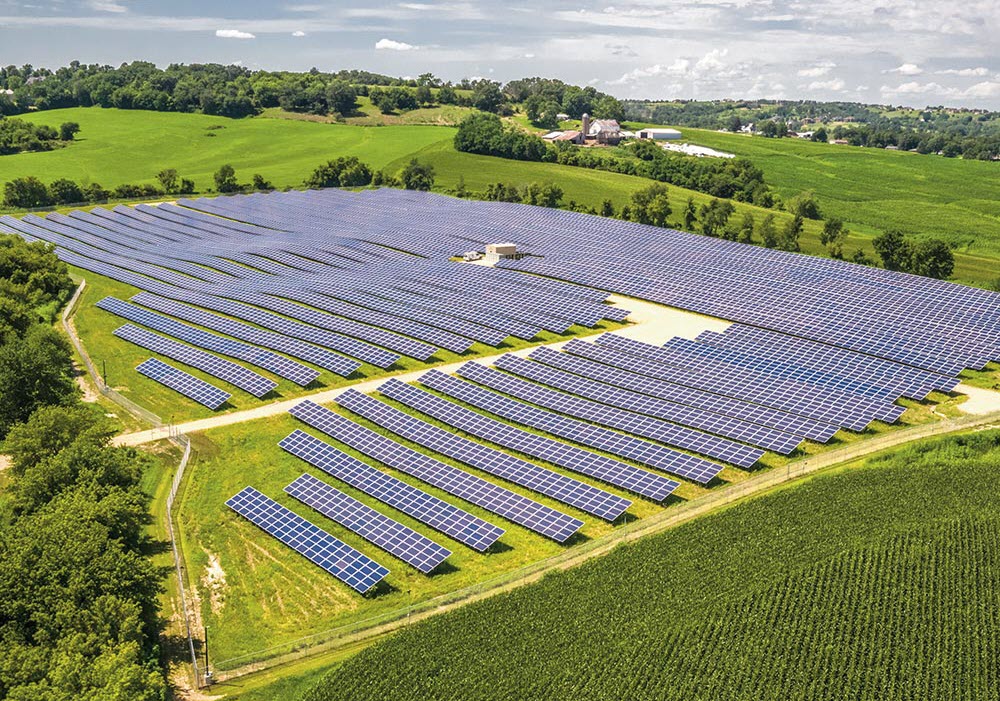You can see solar panels of various shapes and sizes on roofs of homes, at places of employment and out in rural areas. The number of panels and the scale of each project may vary, but the panels themselves work the same way.
How do solar panels convert sunlight into electricity?
Each solar panel is made up of what are called photovoltaic modules (photo as in light, voltaic meaning electrical). As the sun heats these modules, electrons move around inside them and generate electricity.
From each panel, there’s a cable that carries the energy to the next panel and the next until it reaches a combiner box. This box essentially combines the energy of around 400 panels and sends it to the inverters. On smaller-scale projects, the energy from the panels is combined and then tracked at the electric meter.
These inverters convert the direct-current electricity from the panels into alternating current, which is the type used at homes and businesses. Rooftop solar panels may have a small inverter to perform this process. At our utility-scale solar projects, we have anywhere from 14 to 60 inverters.
The energy then heads from the inverters to a local substation, where the energy goes onto the grid. When that happens, the electricity pools together with energy from other sources to travel to homes and businesses as needed.
Making the most of the sun’s rays:
- If panels are mounted to a roof or otherwise stationary, they should face south to capture the most sunlight from our location in the Midwest.
- Some projects have single-axis trackers, which means the rows of panels are installed north-south allowing the panels to rotate east to west throughout the day. This tracking system increases the output of panels approximately 30%.
- Solar panels are covered in tempered glass resistant to heavy winds and hail, but just like windows in a home, this glass might attract dirt or dust over time. Solar panels can get cleaned from rain or snowstorms as the water carries dirt particles off the glass. There are automated technologies that can wash panels, like a robotic vacuum for solar panels. Check out some simple tips for cleaning rooftop solar panels.
- Bifacial solar panels have additional photovoltaic modules on the backside of the panel. Although these modules don’t directly face the sun, they can collect abstract light reflecting off grasses, water, snow and other project equipment. Bifacial panels are approximately 10% more efficient than monofacial panels.
As you decide whether it makes sense to invest in your own solar panels, we’re happy to provide our expertise. We’re already the largest owner and operator of solar power in Wisconsin, and we plan to build 400 megawatts of solar more projects in Iowa as well. We’ve taken steps to make the benefits of solar accessible through our community solar program.
Check out our progress at alliantenergy.com/solar.


